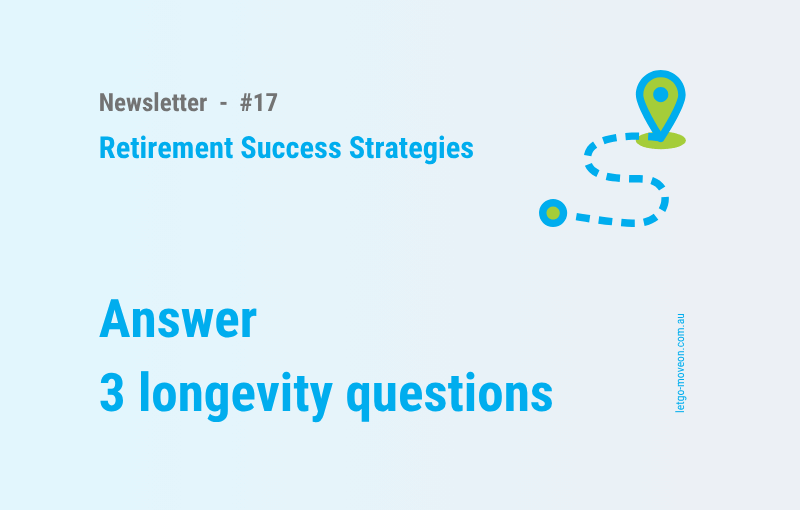In his LinkedIn article “Graduation Meets Longevity Thinking: 3 Questions for Life Ahead”, Dr Joe Coughlin introduces the concept of “longevity thinking” – a mindset that he thinks is crucial for navigating an era where individuals will live and work significantly longer, potentially into their 90s or beyond.
Dr Coughlin argues that the traditional question, “What do you want to be?” after college is obsolete, as careers are no longer linear paths.
Instead, he proposes three essential questions for graduates preparing for a multi-stage life.
I think the three questions are not only a powerful future-planning tool after graduation from college, but also after ‘graduation’ from work:
Asking and answering these questions can help us design, plan, organise, and live our retirement life intentionally and successfully.
Longevity Thinking Exercise
This is how you can start to apply the three key questions of “longevity thinking” to your retirement planning:
#1 – What problems do you love solving?
Identifying the “problems you love solving” can provide inspiration and ideas that help design a retirement aligned with your core priorities, interests, and skills.
For example, someone who loves helping people understand each other could transition from a teaching career to becoming a community mediator or a podcast host in retirement. The title of the job or activity might change while the underlying passion remains constant.
#2 – How will you keep learning throughout your life?
Skills expire faster than ever. Continuous learning – whether formal or self-directed – keeps our minds sharp and our options open well into our 80s.
That’s why we shouldn’t view learning as a burden or solely as an ‘entertainment’ activity for retirement. It is the only way to maintain personal skills, knowledge, and engagement in an ever-changing environment.
#3 – How do you want to invest your time?
Time is a non-renewable currency. It is crucial to deliberately allocate our time across core life areas, including health, relationships, growth projects, and leisure activities.
The ‘compound interest of time’ suggests that intentional investments, such as learning a new skill, fostering friendships, or mentoring others, can yield significant long-term returns in terms of personal fulfilment, support, and goodwill.
Next action steps – Some suggestions:
For “What problems do I love solving?”
Keep a one-week journal of the issues that make you feel engaged and energised
Example: Realise and note that you lit up when showing your neighbours how to use their new phone.
Ask 3 people who know you well which problems they see you fix frequently.
Example: Friends point out to you that you always excel at organising tangled paperwork.
Run a 6-week experiment in an area where you love solving problems.
Example: Volunteer at the local library’s tech-help desk to test
For “How will I keep learning?”
Block a weekly 2-hour learning slot.
Example: Thursday, 10 a.m. – noon, for an online photography course.
Blend learning formats to suit your style.
Example: A Spanish podcast on walks, and a café conversation group on Friday.
Exchange monthly ‘what I learned’ summaries with a (learning) friend – for accountability.
Example: Email him the top three takeaways; receive his in return.
For “How do I want to invest my time?”
Draft your personal ‘time portfolio’ (e.g., Core 50% / Growth 30% / Fun 20%)
Example: Core = fitness & family; Growth = tutoring; Fun = painting class.
Plan in 90-day investment sprints – for agility.
Example: Commit to a 12-week community-garden role instead of a multi-year board seat.
Automate or delegate one recurring chore each month.
Example: Switch utilities to direct debit to reclaim admin hours.
Tip:
If you want to get the most out of this exercise, consider your answers to the 3 questions thoroughly and explore a range of next action steps – but then choose ONLY ONE action.
And then do it! Because the compound interest of intentional time begins immediately. 😊

